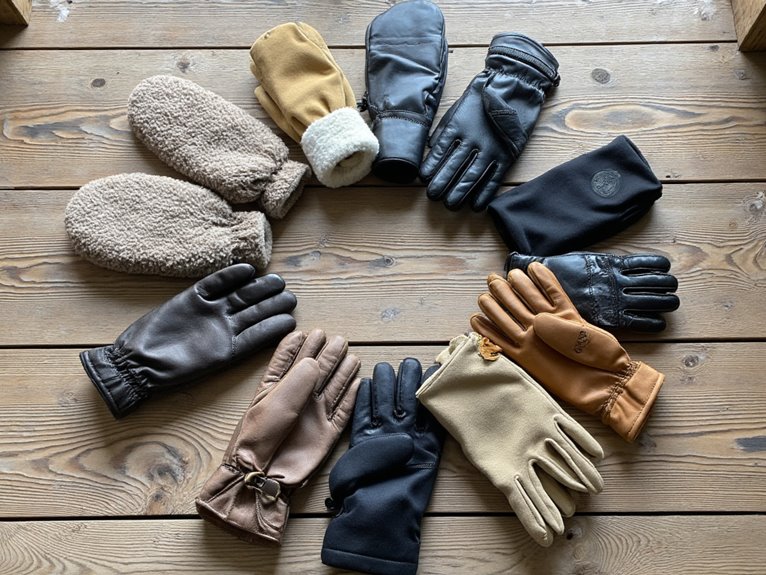How Many Litres Is a 15KG Backpack?
A 15kg backpack's volume capacity depends on its internal dimensions and the type of items it is designed to carry, with typical volumes ranging from 40-50 liters for a standard 15kg backpack. The weight-to-volume ratio varies depending on the density of the items being carried, affecting the overall volume capacity. Understanding this ratio is vital for accurate estimation. To optimize packing, it's essential to take into account the backpack's internal dimensions, shape, and design. Discover how to accurately calculate your backpack's volume and learn expert packing strategies to make the most of your space, exploration awaits.
We are supported by our audience. When you purchase through links on our site, we may earn an affiliate commission, at no extra cost for you. Learn more. Last update on 10th December 2025 / Images from Amazon Product Advertising API.
Understanding Backpack Volume Measurements
Understanding Backpack Volume Measurements
In terms of measuring the volume of a backpack, understanding the units of measurement is crucial, as it can greatly impact the accuracy of calculations and conversions.
As regards backpack volume, the most common units of measurement are liters (L) and cubic inches (in³).
Liters are the standard unit of measurement in the metric system, while cubic inches are commonly used in the imperial system.
It's essential to be familiar with both units, as they are often used interchangeably in the outdoor industry.
Mastering the conversion rates between these units, such as 1 liter being equivalent to approximately 61 cubic inches, will facilitate accurate calculations and conversions.
Converting Weight to Volume Capacity
When converting weight to volume capacity, understanding the weight to volume ratio, which varies depending on the density of the items being carried, is crucial.
To accurately determine the volume capacity of a 15kg backpack, we must investigate different capacity conversion methods that account for the unique characteristics of the contents.
Weight to Volume Ratio
Converting weight to volume capacity requires a thorough understanding of the weight-to-volume ratio, as the density of the items packed in the 15kg backpack substantially affects the overall volume.
The weight-to-volume ratio is vital in determining the volume capacity of the backpack.
For instance, a 15kg backpack filled with high-density items like books or tools will occupy less volume than the same weight of low-density items like clothing or sleeping bags.
Understanding the weight-to-volume ratio enables accurate estimation of the volume capacity of the backpack.
This ratio varies depending on the type of items packed, making it essential to take into account the density of the items when calculating the volume capacity.
Capacity Conversion Methods
To accurately estimate the volume capacity of a 15kg backpack, several conversion methods can be employed, taking into account the varying densities of items packed.
One common method is the 'cube law,' which assumes a density of approximately 150-200 grams per liter. This method is suitable for general calculations, but may not account for irregularly shaped items or varying packing densities.
Another approach is to use a volume-weight ratio, where an average ratio of 1 liter per kilogram is applied. This method is more accurate for backpacks with a mix of items, but may not account for extremely dense or lightweight items.
Factors Affecting Backpack Volume
The volume of a backpack is influenced by several key factors, including the shape and design of the pack, the type and thickness of the materials used, and the intended use of the backpack.
For instance, a backpack designed for hiking may have a more streamlined shape to reduce wind resistance, while a backpack for daily commuting may prioritize comfort and accessibility.
Additionally, the type of materials used can substantially impact the volume of the backpack, with thicker, more durable materials often resulting in a smaller volume.
Understanding these factors is essential in accurately determining the litres equivalent of a 15kg pack.
Average Volume of 15kg Backpacks
While the volume of a backpack can vary greatly depending on its design and materials, a typical 15kg backpack generally falls within a specific volume range.
On average, a 15kg backpack typically has a volume of around 40-50 liters.
This volume range allows for a comfortable carrying capacity while also providing ample space for packing essentials.
The volume can be further divided into compartments, pockets, and sleeves to organize gear efficiently.
Understanding the average volume of a 15kg backpack is essential for optimizing packing strategies and ensuring a comfortable carrying experience.
Comparing Different Backpack Brands
When evaluating different backpack brands, understanding the varying capacities of each brand is essential.
A thorough examination of brand capacity comparison reveals distinct differences in volume measurements, making it vital to take these variations into account when selecting the right backpack for your needs.
This comparison, coupled with a capacity conversion guide, will provide a thorough understanding of the true volume of your 15kg backpack.
Brand Capacity Comparison
Among popular backpack brands, Osprey and Fjallraven offer some of the largest capacities, with their 15kg equivalents translating to approximately 65-70 liters.
In contrast, brands like Deuter and Salomon tend to have slightly smaller capacities, with their 15kg backpacks typically ranging from 55-60 liters.
Arc'teryx and The North Face fall somewhere in between, with capacities around 60-65 liters.
It's essential to note that these are general estimates, and actual capacities may vary depending on the specific model and design.
When choosing a backpack, consider your specific needs and the type of gear you'll be carrying to guarantee you select the right size for your adventures.
Capacity Conversion Guide
To facilitate a more accurate comparison of backpack capacities across different brands, it's helpful to understand the general volume equivalents of various weight capacities, as this can vary substantially between manufacturers.
- 10kg = 40-50L: A small to medium-sized backpack suitable for day trips or overnight stays.
- 15kg = 60-70L: A medium-sized backpack ideal for multi-day hikes or short trips.
- 20kg = 80-90L: A large backpack suitable for extended trips or heavy packers.
- 25kg = 100-120L: An extra-large backpack for long expeditions or heavy-duty use.
Packing Strategies for Maximum Space
Optimizing backpack space requires strategically layering clothing and gear to maximize capacity, allowing for a more efficient packing process.
To achieve this, start by packing bulky items like sleeping bags and jackets at the bottom of the backpack.
Next, add layers of clothing, rolling each item to minimize wrinkles and save space.
Place smaller items like socks and underwear in gaps between larger items.
Utilize side pockets and compartments to store essentials like water bottles, snacks, and first-aid kits.
Finally, compress items like towels and clothing into smaller bundles to fill any remaining space.
Common Items and Their Volume
By strategically packing bulky items and compressing smaller ones, travelers can efficiently utilize their backpack's capacity, but it's just as vital to understand the volume of common items to facilitate accurate planning and packing.
Knowing the volume of essential items helps travelers allocate space effectively and avoid overpacking.
- Sleeping Bag: 10-15 liters
- Tent: 15-20 liters
- Hiking Boots: 5-7 liters
- Clothing (per outfit): 2-3 liters
Understanding the volume of these items enables travelers to plan their packing list and optimize their backpack's capacity.
Calculating Your Backpack's Volume
Calculating Your Backpack's Volume
A backpack's volume is typically measured in liters, with the capacity of a 15kg backpack equivalent to approximately 40-50 liters, depending on the design and manufacturer.
To calculate your backpack's volume, measure its length, width, and height in centimeters.
Multiply these dimensions together to get the volume in cubic centimeters.
Finally, divide the result by 1,000 to convert it to liters.
For irregularly shaped backpacks, use a flexible tape measure to calculate the volume.
Alternatively, check the manufacturer's specifications or packaging for the volume measurement.
Accurately calculating your backpack's volume helps you pack efficiently and plan your trips more effectively.



